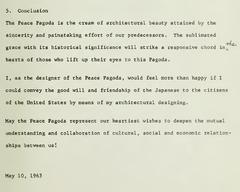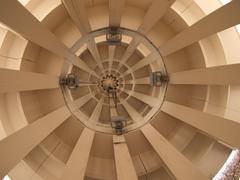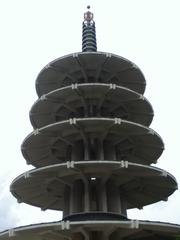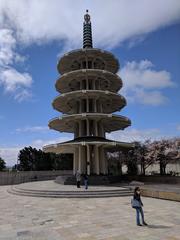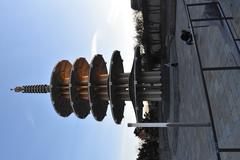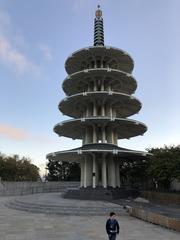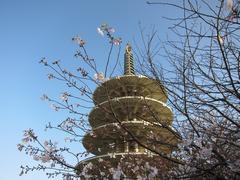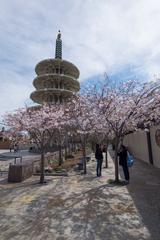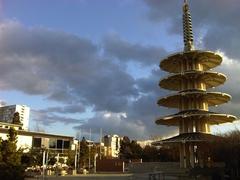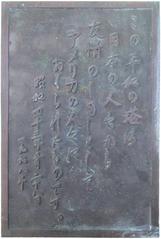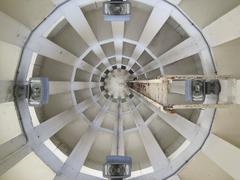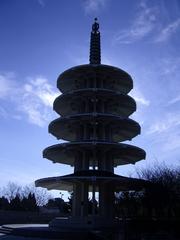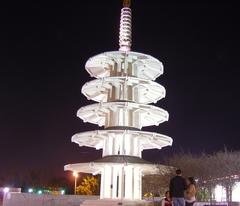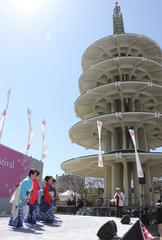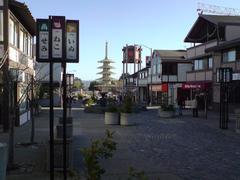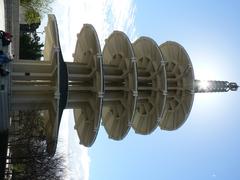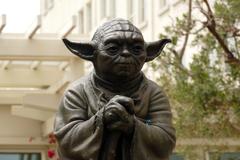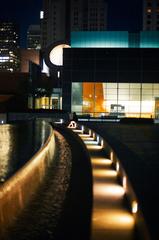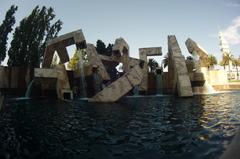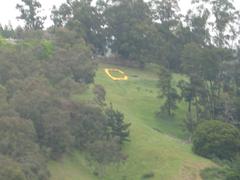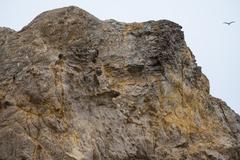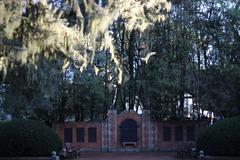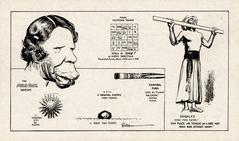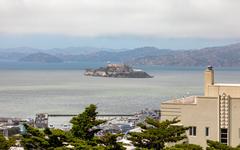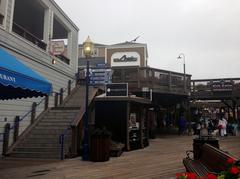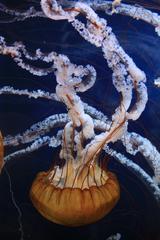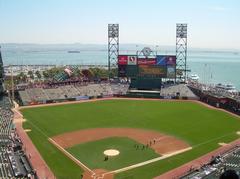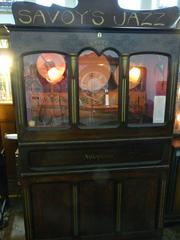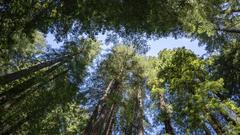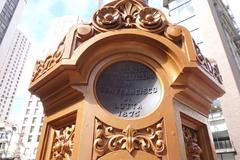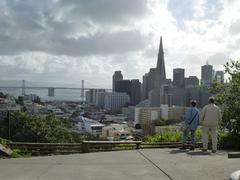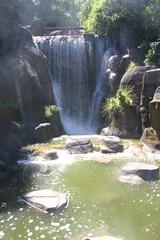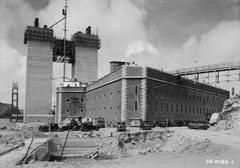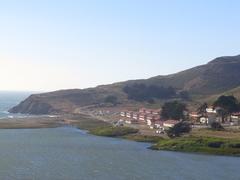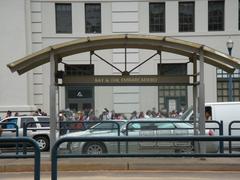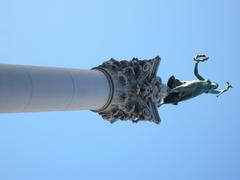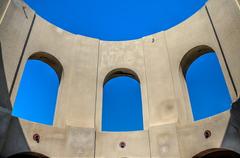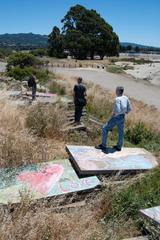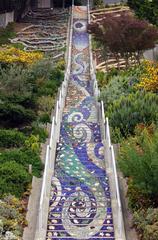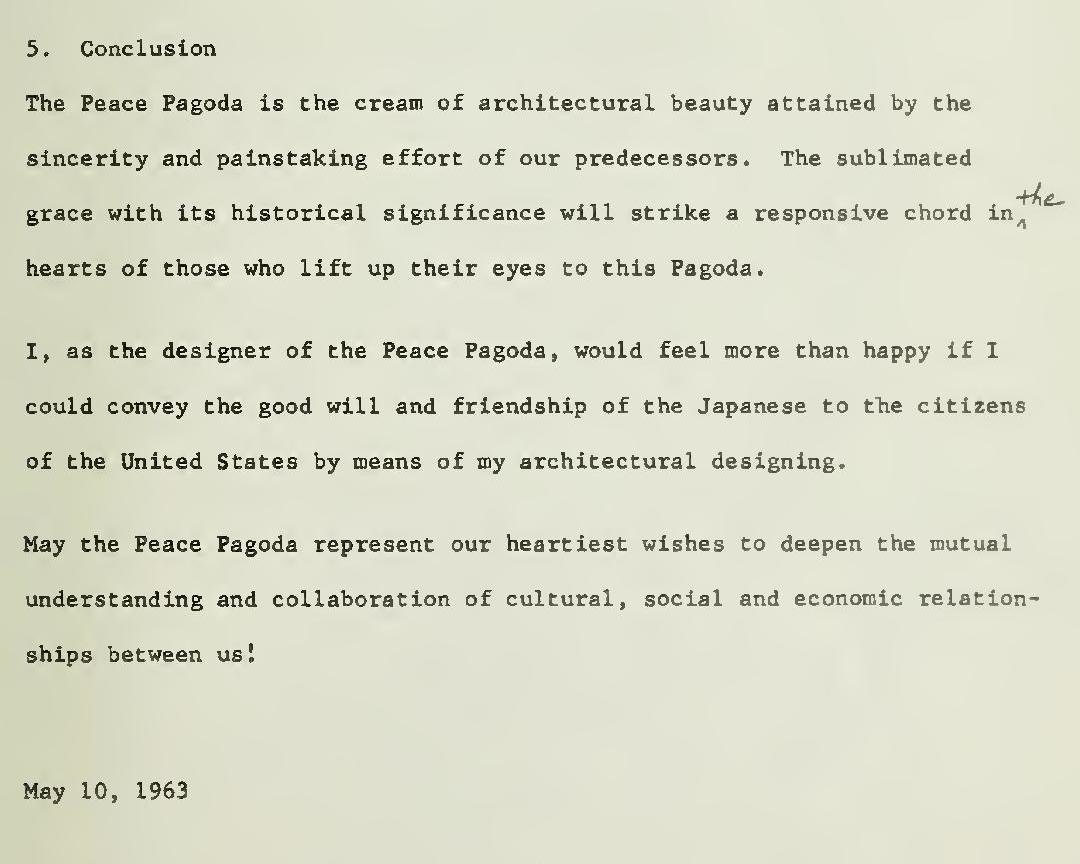
Guide to Visiting Peace Pagoda San Francisco
Date: 01/08/2024
Introduction
The Peace Pagoda in San Francisco’s Japantown is a captivating monument symbolizing peace, unity, and the rich cultural heritage shared between Japan and the United States. Erected in 1968, this five-tiered concrete stupa was a generous gift from San Francisco’s sister city, Osaka, Japan, and was designed by the renowned Japanese modernist architect, Yoshirō Taniguchi (Wikipedia). The Pagoda, standing 100 feet tall, is located at the heart of Japantown in the Peace Plaza, an area known for its historical significance and vibrant cultural events. This guide provides a comprehensive overview of the Peace Pagoda, including its history, cultural impact, and visitor information. Whether you are a history enthusiast, architecture lover, or simply seeking a serene place to visit, this guide offers valuable insights and tips for your visit.
Table of Contents
- Introduction
- History of the Peace Pagoda in San Francisco’s Japantown
- Cultural Impact
- Renovation and Future Prospects
- Visitor Information
- Nearby Attractions
- FAQ
- Conclusion
History of the Peace Pagoda in San Francisco’s Japantown
Origins and Construction
The Peace Pagoda was a gift from San Francisco’s sister city, Osaka, Japan, officially presented on March 28, 1968 (Wikipedia). Designed by Yoshirō Taniguchi, the construction was overseen by the Martinelli Construction Company of San Francisco. The dedication ceremony took place on September 15, 1968, attended by dignitaries such as the Ambassador from Japan, Takesō Shimoda, and the deputy mayor of Osaka, Yasushi Oshima (Wikipedia).
Architectural Design
The Peace Pagoda features a circular roof inspired by the Million Pagoda (Hyakumantō), a miniature pagoda design placed in ten temples by Empress Kōken around 770 A.D. (Wikipedia). The Pagoda stands 100 feet tall and features five distinct stories, each supported by twelve vertical reinforced concrete pillars. Above the uppermost roof is the sōrin finial, consisting of a nine-ringed bronze spire topped by a golden flaming head, which was cast locally in Berkeley (Wikipedia).
Historical Significance
San Francisco’s Japantown is one of only three remaining Japantowns in the United States and is the oldest among them (Local News Matters). The Peace Pagoda and Peace Plaza are central to this historic district, serving as focal points for cultural festivals and community gatherings. The Pagoda was part of the Japan Center Mall, one of the first projects undertaken by the San Francisco Redevelopment Agency (SFRA) in the Western Addition (Wikipedia).
Cultural Impact
The Peace Pagoda has become a symbol of peace and unity, hosting numerous annual events such as the Northern California Cherry Blossom Festival and the Nihonmachi Street Fair (Local News Matters). These events draw thousands of visitors each year, contributing to the cultural vibrancy of Japantown.
Renovation and Future Prospects
Community Involvement
In 2024, the Peace Plaza, which houses the Peace Pagoda, is set to undergo a $25 million renovation to transform it into a vibrant community space while preserving its historical legacy (Local News Matters). Mayor London Breed emphasized that the project is about celebrating a rich cultural history and welcoming people from around the world (SF Gov).
Architectural and Cultural Enhancements
The renovation will include landscape architecture, architecture, and engineering services provided by San Francisco Public Works. The construction contract has been awarded to Plant Construction Company L.P. (SF Gov). The project aims to enhance the aesthetic and functional aspects of the Peace Plaza, ensuring it remains a central gathering point for generations to come (SF Gov).
Visitor Information
Visiting Hours
The Peace Pagoda is open to the public 24 hours a day, but the best time to visit is during daylight hours.
Tickets
There is no admission fee for visiting the Peace Pagoda.
Best Times to Visit
Spring and fall are ideal times to visit, especially during cherry blossom season or cultural festivals.
Travel Tips
Japantown is easily accessible via public transport, and there are several parking options nearby.
Nearby Attractions
Japan Center Mall
Explore a variety of Japanese shops, restaurants, and cultural exhibits.
Kabuki Springs & Spa
Relax and rejuvenate at this traditional Japanese bathhouse.
Fillmore Street
Enjoy boutique shopping and dining in one of San Francisco’s most vibrant neighborhoods.
FAQ
What are the visiting hours for the Peace Pagoda? The Peace Pagoda is open to the public 24 hours a day, but visiting during daylight hours is recommended.
How much do tickets to the Peace Pagoda cost? There is no admission fee for visiting the Peace Pagoda.
What events are held at the Peace Pagoda? The Peace Pagoda hosts numerous annual events, including the Northern California Cherry Blossom Festival and the Nihonmachi Street Fair.
When is the best time to visit the Peace Pagoda? Spring and fall are the best times to visit, particularly during cherry blossom season or cultural festivals.
Conclusion
The Peace Pagoda in San Francisco’s Japantown is a rich cultural site that offers visitors a glimpse into Japanese heritage and the enduring spirit of peace and unity. From its historical significance to its upcoming renovations, the Pagoda remains a central landmark for community gatherings and cultural celebrations. Plan your visit today and experience the unique blend of history and culture that this iconic site has to offer.
References
- Wikipedia, 2024, San Francisco Peace Pagoda
- Local News Matters, 2024, SF’s Japantown Peace Plaza about to receive $25M overhaul as cultural history destination
- SF Gov, 2024, City officials and Japantown community break ground on Peace Plaza renovation project
- SF Examiner, 2024, Landmark status may be in store for Japantown’s Peace Pagoda
- Culture Trip, 2024, A brief history of San Francisco’s Japantown Peace Plaza
- SF YIMBY, 2024, City celebrates groundbreaking for Japantown Peace Plaza renovation, San Francisco
